Habitats
Old Park & Chequers Wood is a diverse landscape, featuring valuable habitats such as acid grassland, scrub and ancient woodland, all of which contribute to its designation as a Site of Special Scientific Interest (SSSI). The whole area supports rare and declining species of flora and fauna, including reptiles, birds, and invertebrates. Water meadows, a critical habitat adjacent to Old Park, offer a biodiverse ecosystem, supporting wetland flora such as meadow buttercup and marsh horsetail, and further enrich the site’s ecological value.
The importance of the whole of Old Park & Chequers Wood in maintaining biodiversity in Kent can be demonstrated by the fact that scarce plants have been recorded across the whole site, both within and outside the current SSSI boundaries. Almost 400 plant species have been recorded, of which 68 are axiophytes (indicative of quality habitats) and 16 are on the Kent Rare Plant Register, which provides a broadly similar function for vascular plants as the Kent Red Data book.
Habitat of this quality is likely to support a wide range of scarce invertebrates, though the full potential of the site from this perspective is still to be explored. The area is already included in one of Buglife’s Important Invertebrate Areas (IIA) – areas that are home to nationally or internationally significant invertebrate populations and their habitats. In addition, the mosaic of habitats on Old Park & Chequers Wood is vital to the continued existence of the site’s high density of breeding nightingales.
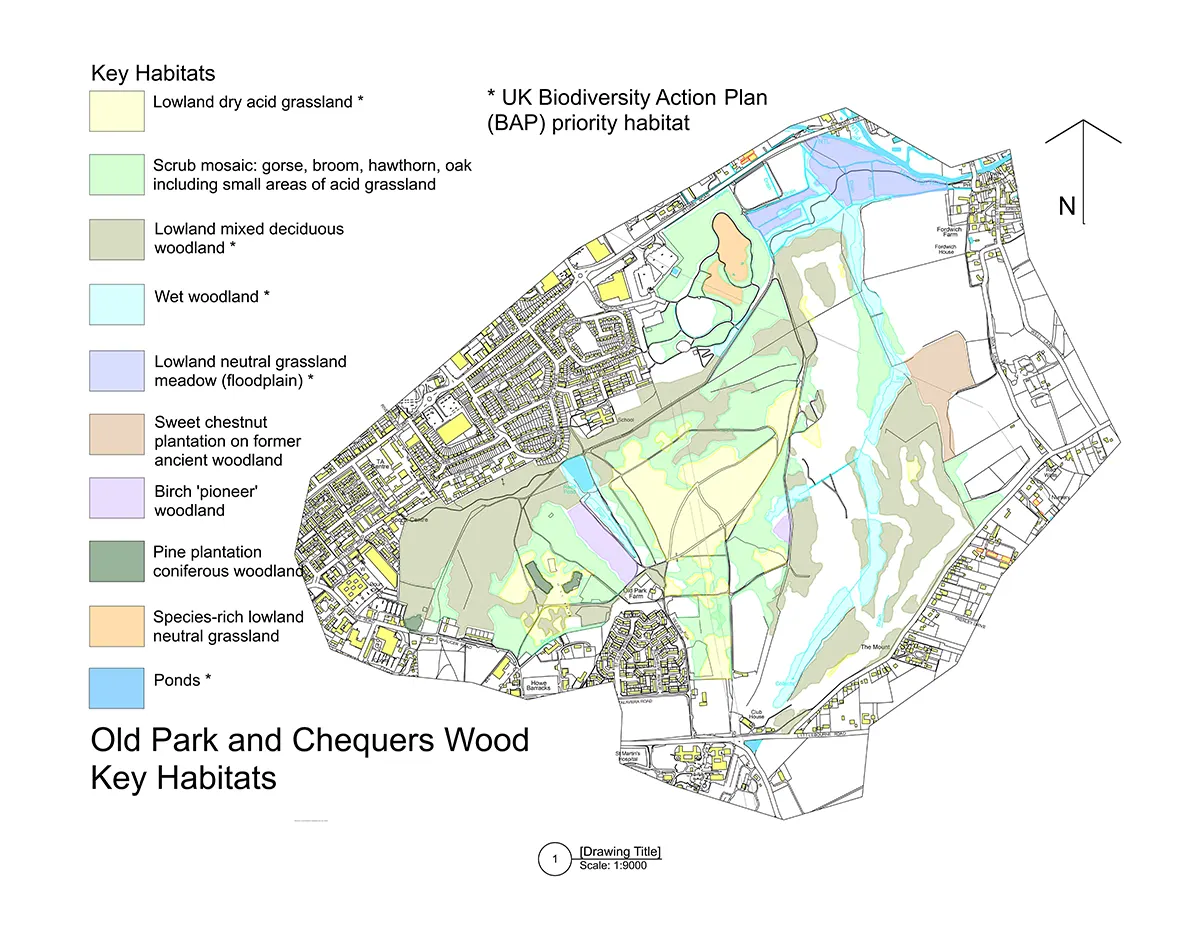
Acid Grassland
Although once widespread, Kent’s unimproved acid grasslands are now a rare and highly fragmented habitat. Most have been lost to agricultural intensification, forestry, development, and poor management. In recognition of their rarity, and the fact that the creation of new acid grassland is ecologically unachievable, they have been categorised as a priority habitat, both nationally and regionally.
Lowland acid grassland is typically an open habitat with low-growing plant communities that are able to survive acid soils and water-stressed conditions. The swards contain a diversity of fine-leaved grasses, as well as specialist broad-leaved plants. Very dry areas that are devoid of vegetation can support a range of bryophytes (mosses) or lichens. Acid grassland provides the habitat for a diverse range of invertebrates that can tolerate the dry, acidic conditions. These include ground-nesting solitary bees, such as the green-eyed flower bee, and their predator, the ornate-tailed digger wasp. Another common species is the beautiful small copper butterfly whose caterpillars feed on the sheep’s sorrel which grows all across the acid grassland plateau.
Old Park is one of the three largest remaining acid grassland sites in Kent. The other two large sites are Knowle Park near Sevenoaks and Hatch Park near Ashford. The extent of acid grassland on Old Park was one of the main reasons for its classification as a Site of Special Scientific Interest in 1968.
Characteristic plant species of the acid grassland on Old Park include sheep’s sorrel, heath bedstraw, birds-foot and early hair-grass, all of which are widespread across the central plateau. Some of the many interesting plants growing on Old Park’s dry, sandy soils include small clovers such as birds-foot and clustered (growing in the shortest grassland), changing forget-me-not, mossy stonecrop, harebell and narrow-leaved vetch. An unusual inland population of clove-scented broomrape also exists.
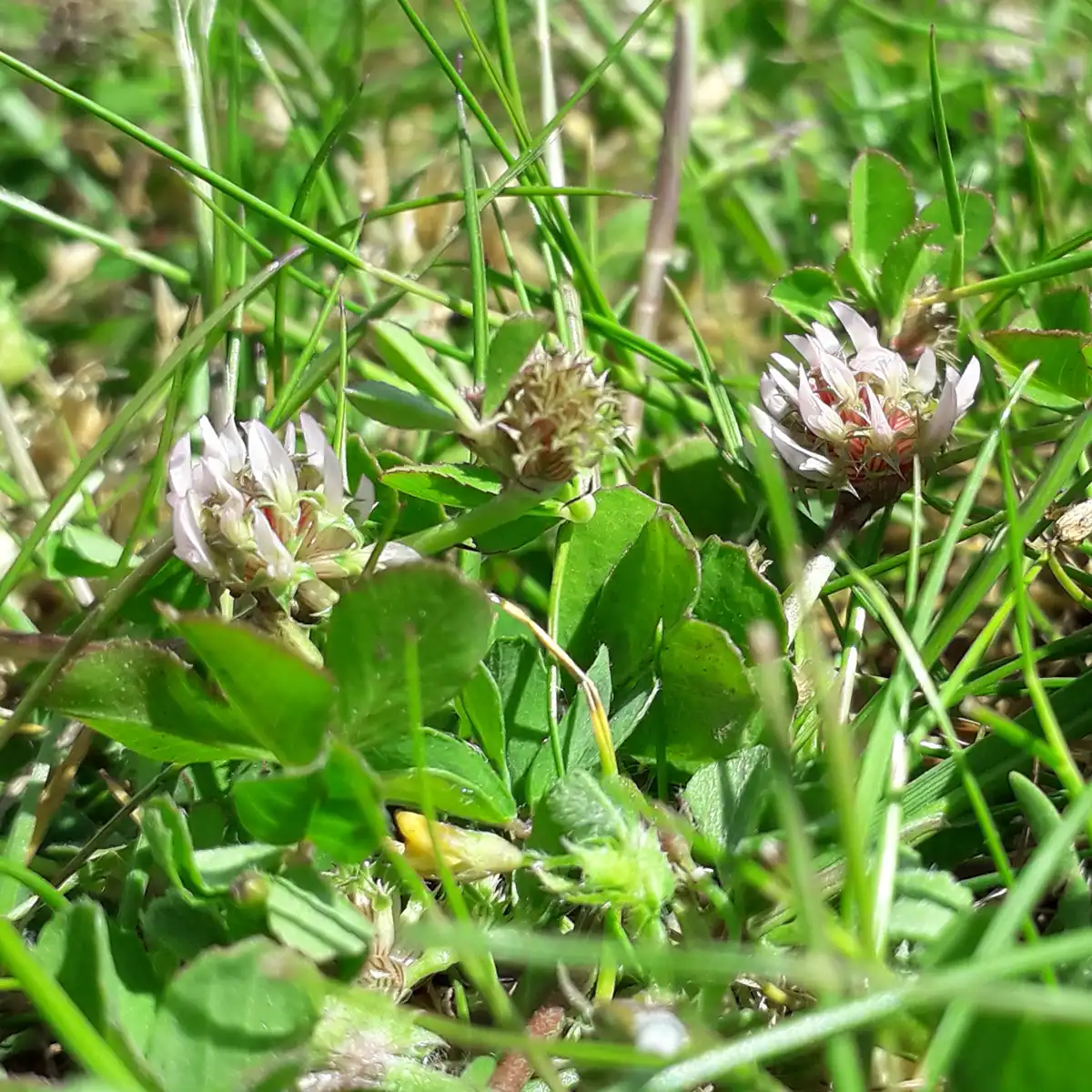
Clustered Clover (Kent Rare Plant Register)
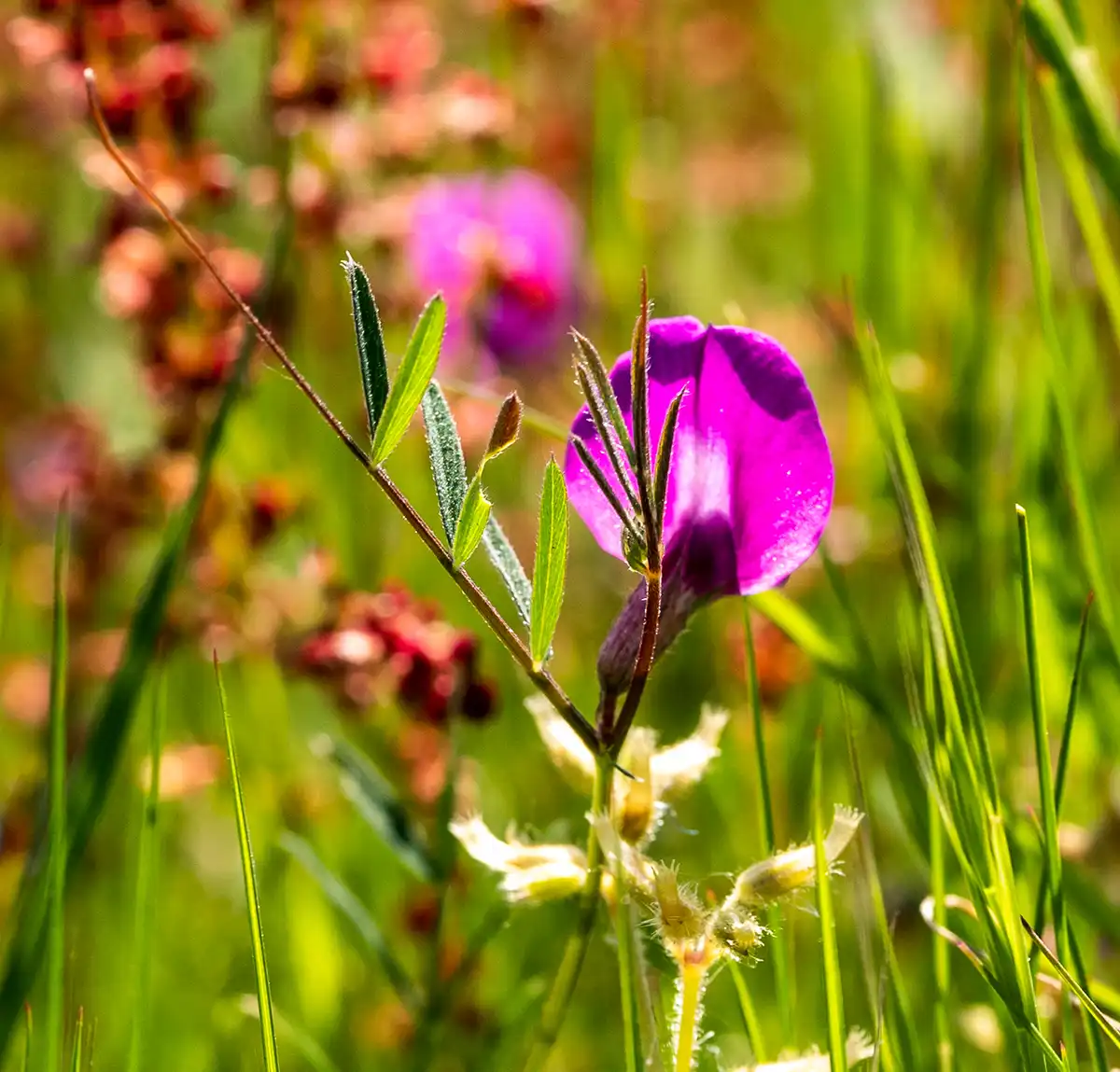
Narrow-leaved Vetch
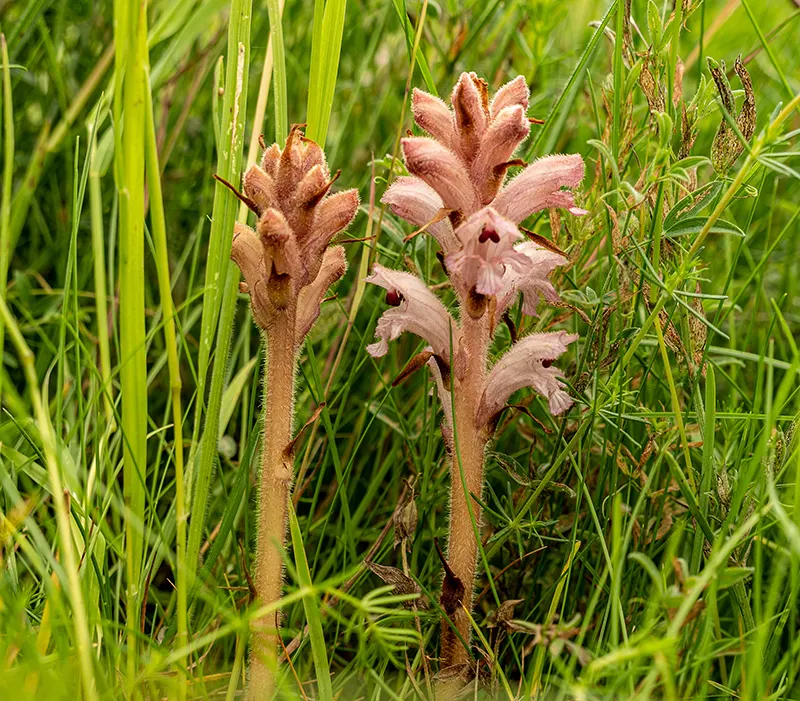
Clove-scented Broomrape (Kent Rare Plant Register)
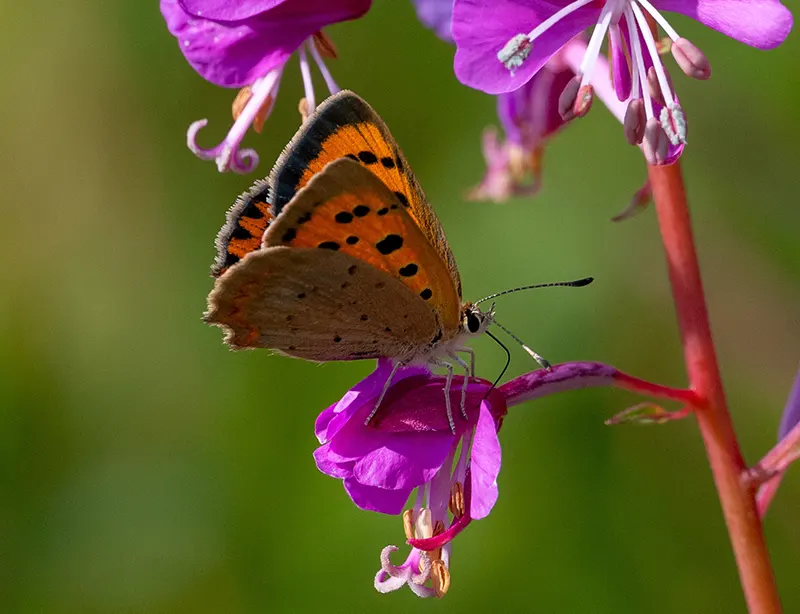
Small copper butterfly
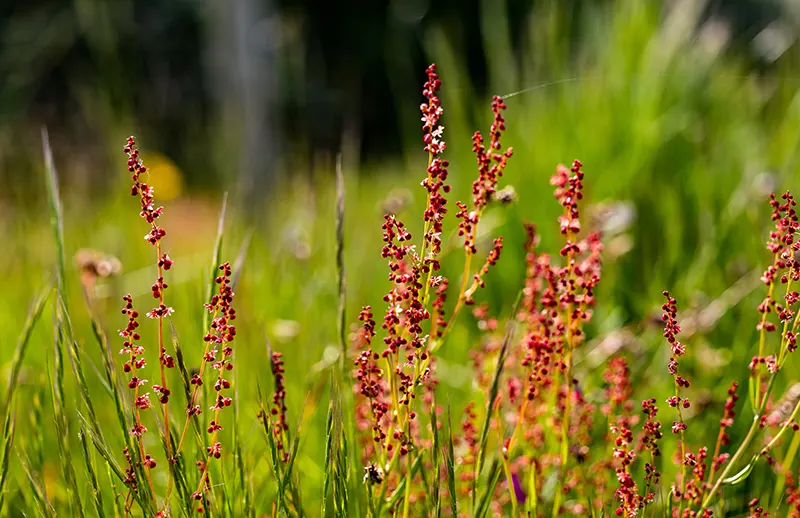
Sheep’s Sorrel
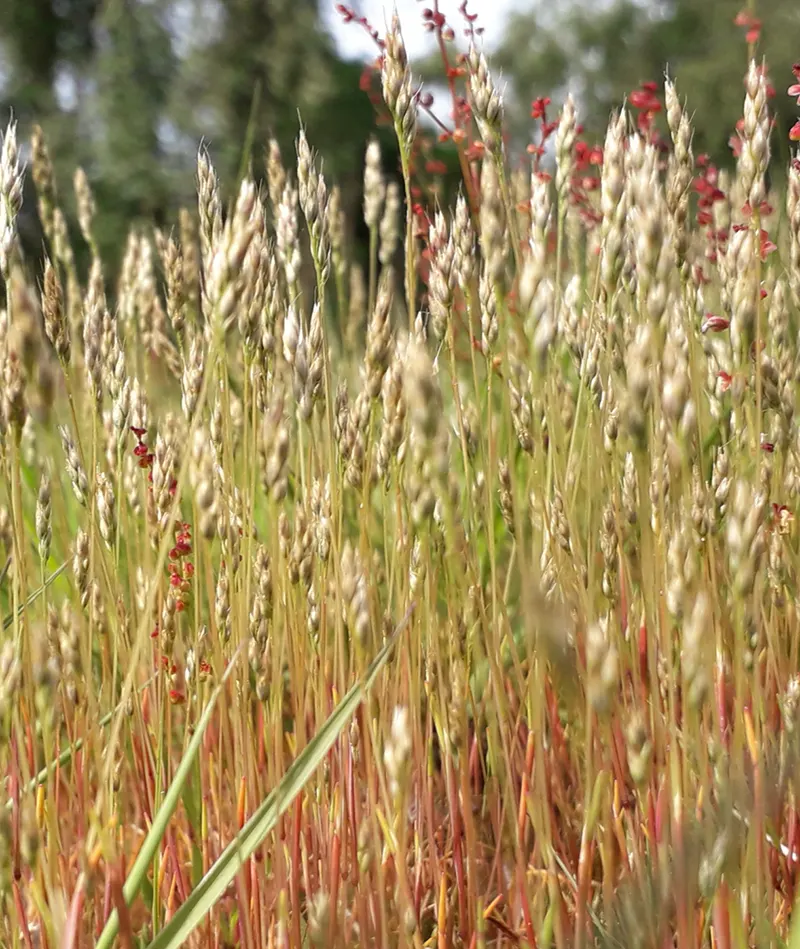
Early Hair Grass
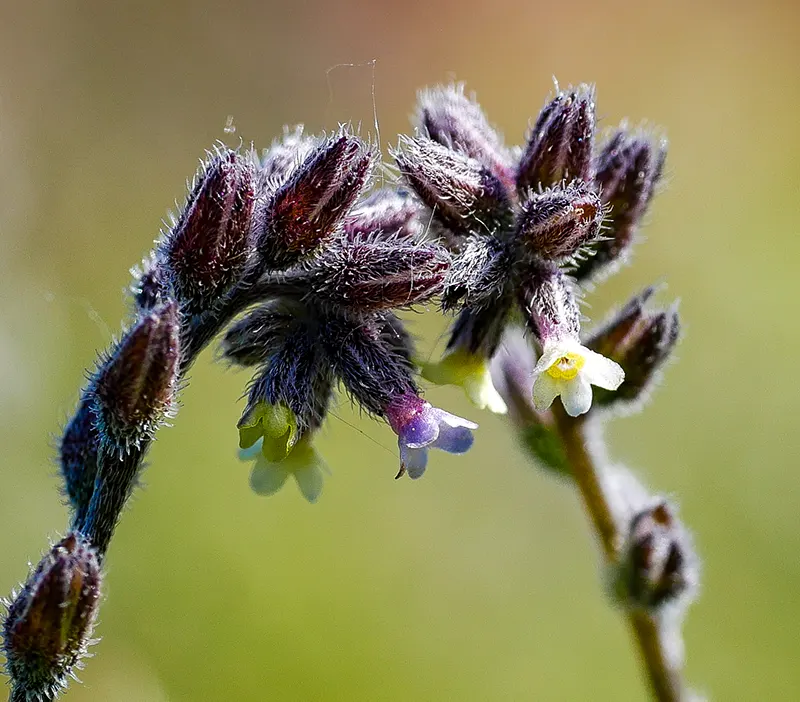
Changing Forget-Me-Not
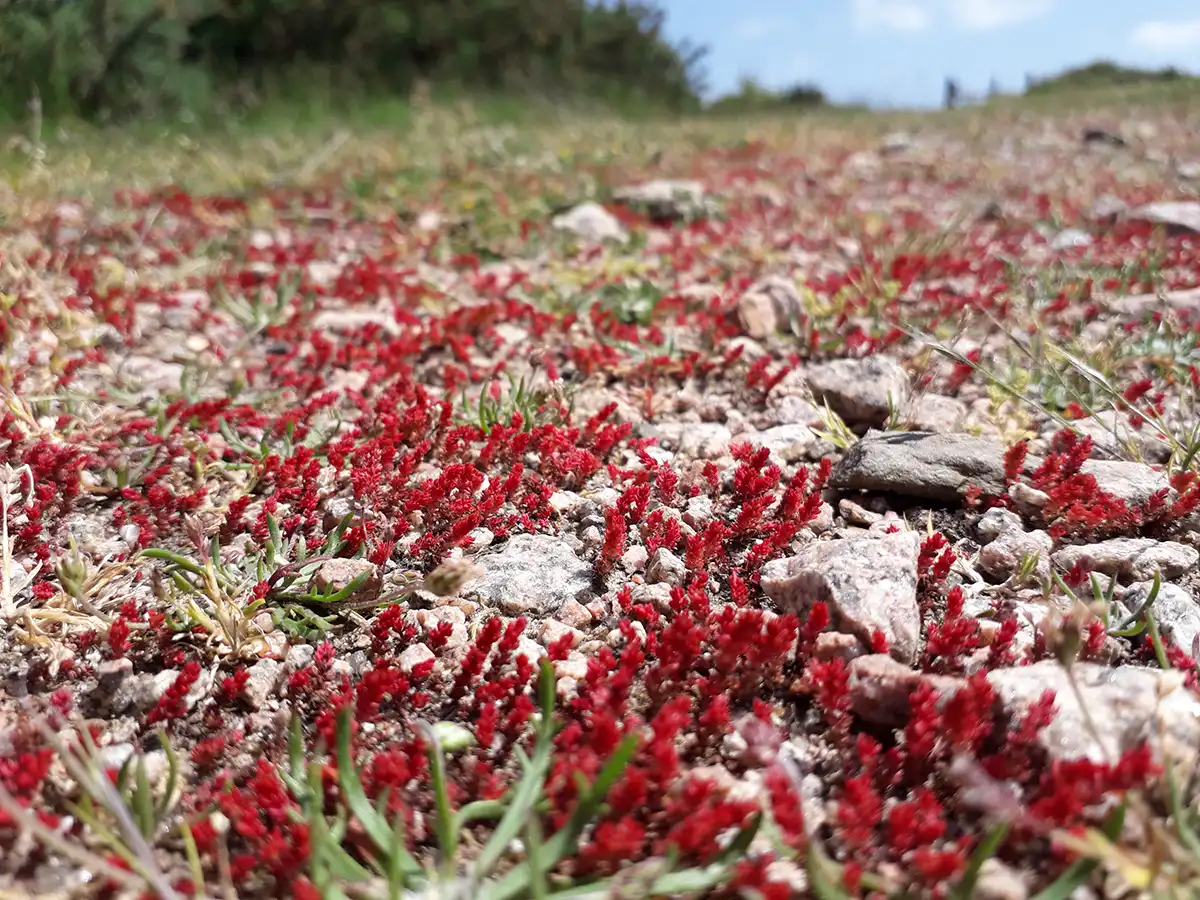
Mossy Stonecrop (Kent Rare Plant Register)
Scrub Mosaic
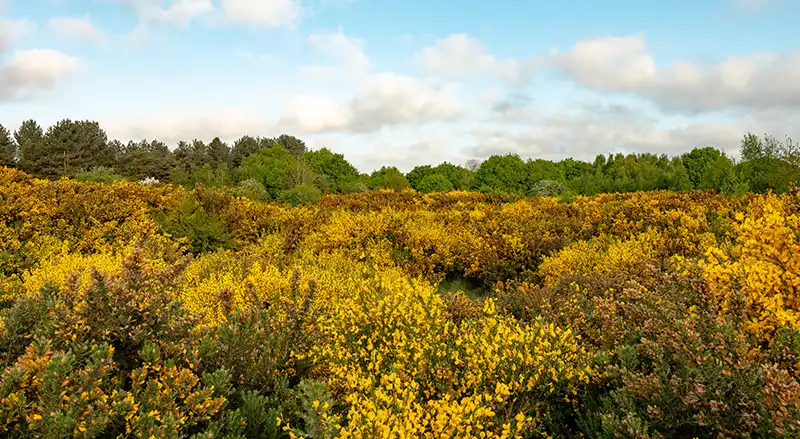
Alongside acid grassland and ancient woodland, scrub was one of the distinct habitat types highlighted in the decision to designate Old Park & Chequers Wood as a Site of Scientific Interest (SSSI citation). The close proximity between the three habitat types provides an unusual and valuable habitat mosaic.
Scrub is a successional habitat that is in transition from one habitat type to another. In Old Park, it is in transition from acid grassland to secondary woodland. As such, it needs careful management to prevent it from encroaching excessively onto the acid grassland or from developing into woodland and losing the benefits for wildlife that scrub provides.
Scrub is a habitat on which many species depend for their survival. It can support a great variety of species by providing food, shelter, breeding, and roosting sites. Old Park’s scrub is dominated by gorse which forms a sea of yellow flowers from January through to June. These provide nectar for insects at the coldest point in the year.
Notable plants associated with the scrub include the scarce greater broomrape, which is mentioned in the citation for the SSSI but has not been seen for many years. Another is heath groundsel.
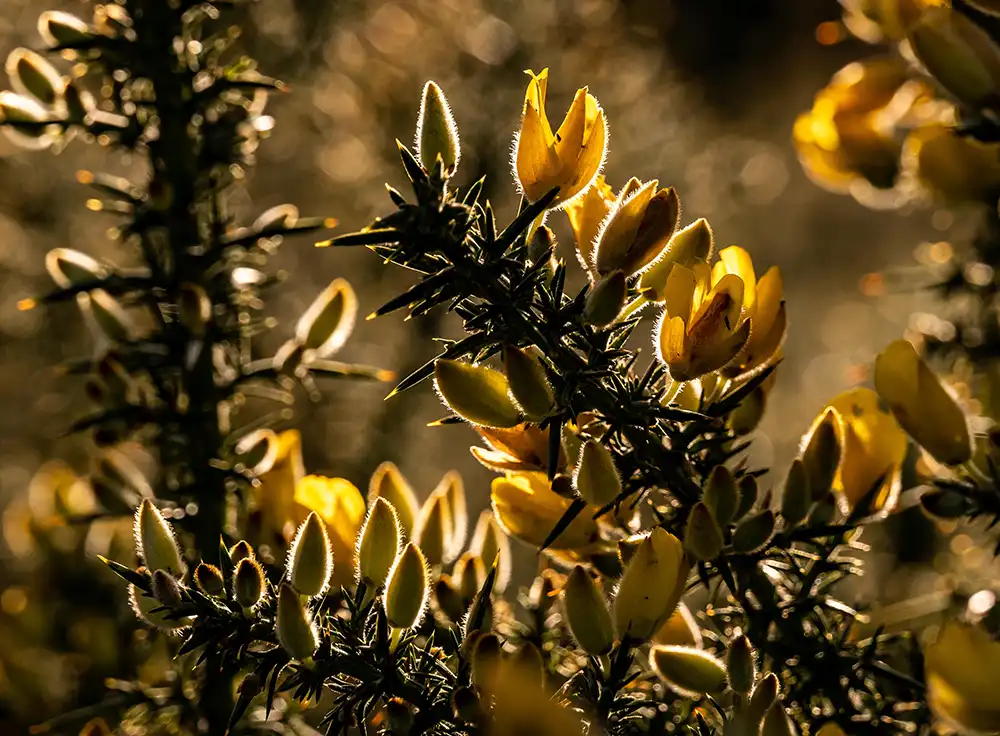
Birds
Scrub provides impenetrable thickets for nesting birds. It is especially important for nightingales that nest on the ground and whose nests would otherwise be vulnerable to disturbance and predation by larger mammals and birds.
Nightingale numbers have declined significantly in recent years and they are now on the Red list of birds of conservation concern. Old Park has one of the highest densities of breeding nightingales in the UK, with 45 nightingale territories recorded in 2023. This is largely due to the damp scrub habitat which the site provides. The map of nightingale habitats below shows that nightingale territories are not restricted to the boundaries of the SSSI, but are found across the site.
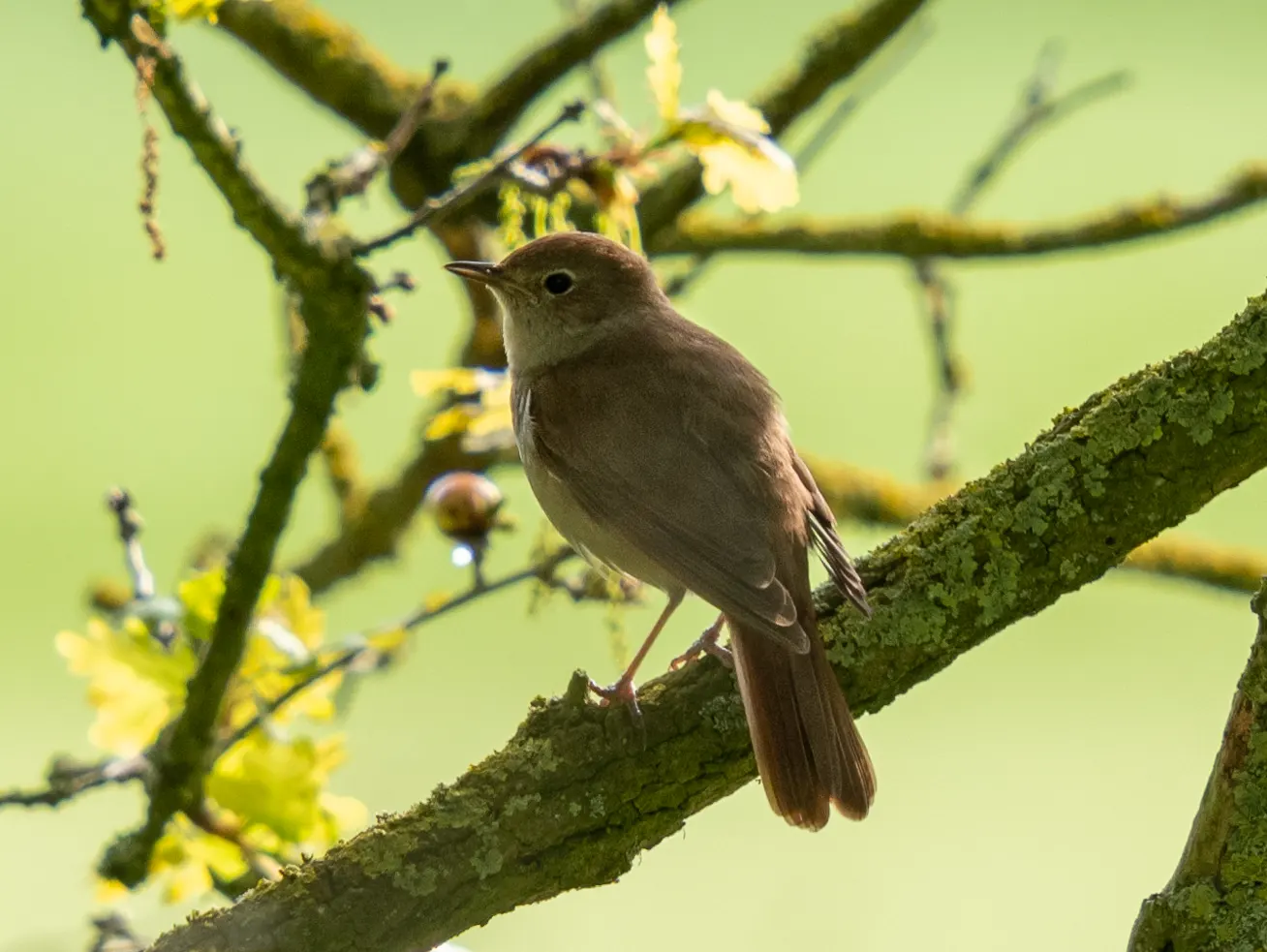
Nightingale on Old Park
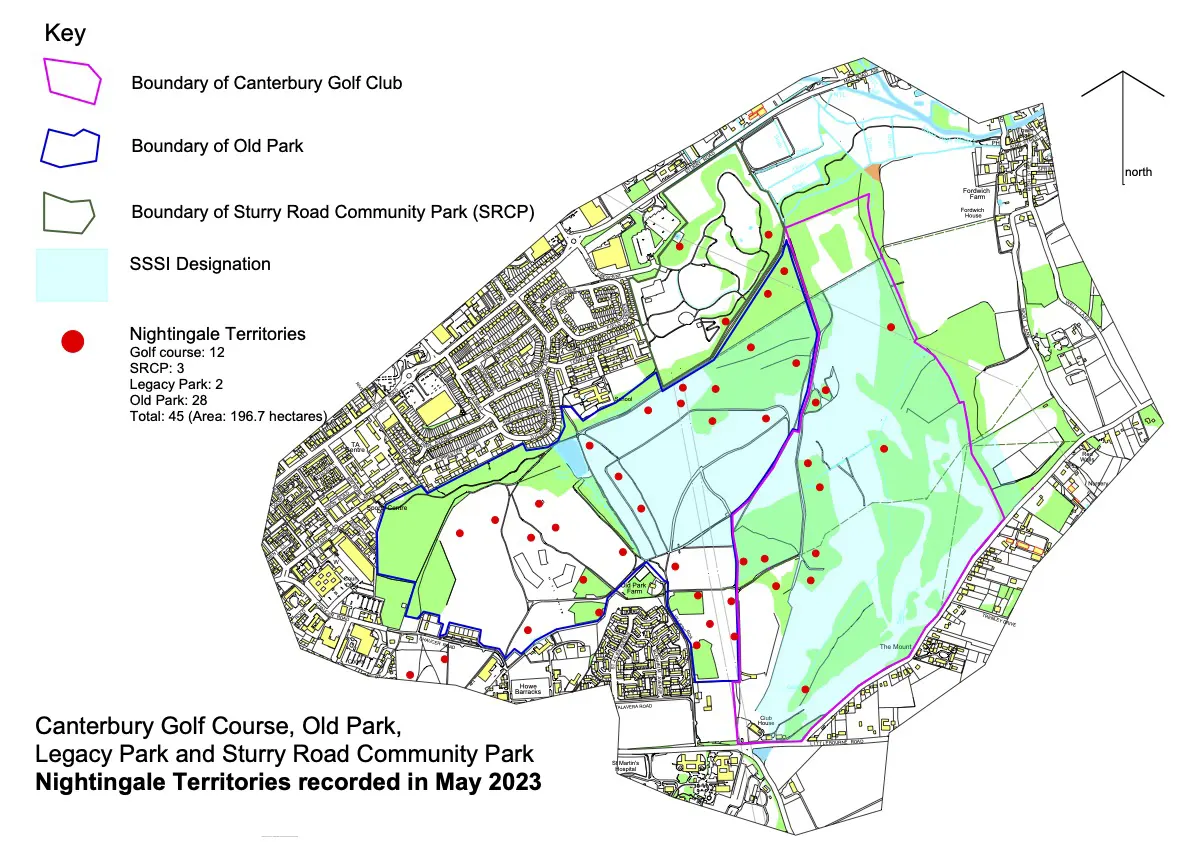
There are many other bird species which use the gorse, bramble, and hawthorn scrub on Old Park for feeding, nesting, and shelter. These include red-listed species such as turtle doves and linnet, and other birds such as stonechat, blackcap, chiffchaff, and garden warbler.
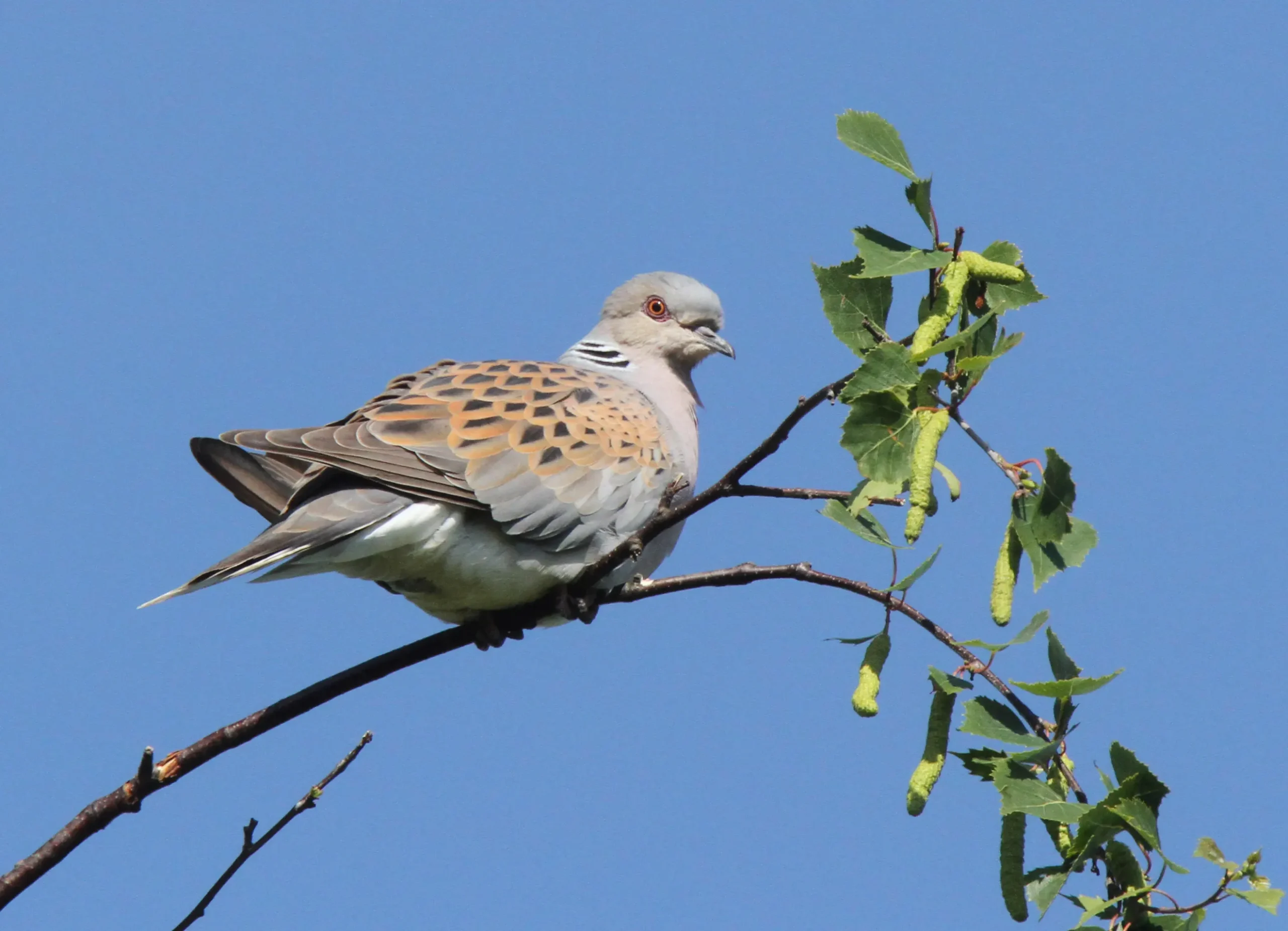
Turtle Dove on Old Park
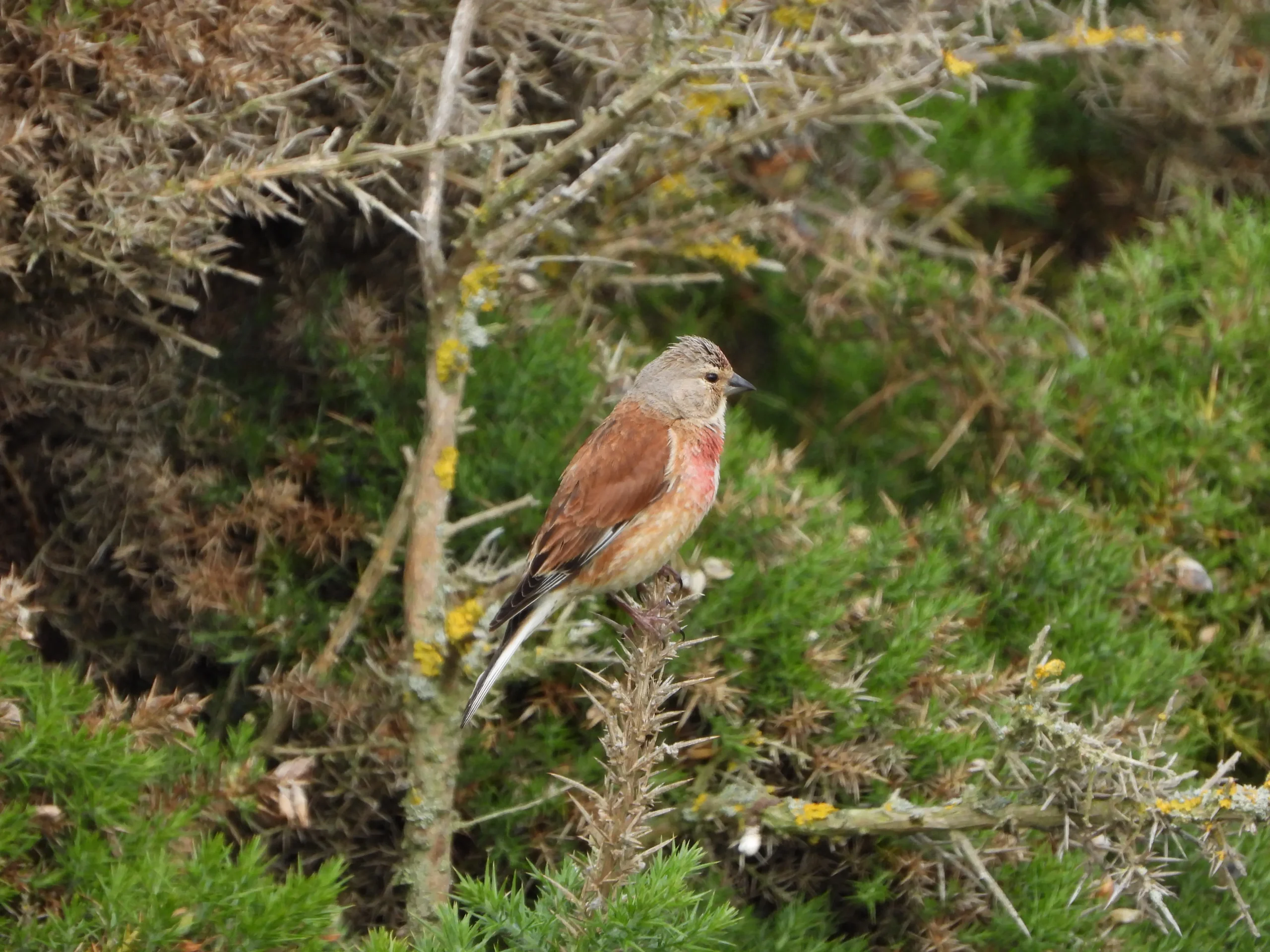
Linnet on gorse on Old Park
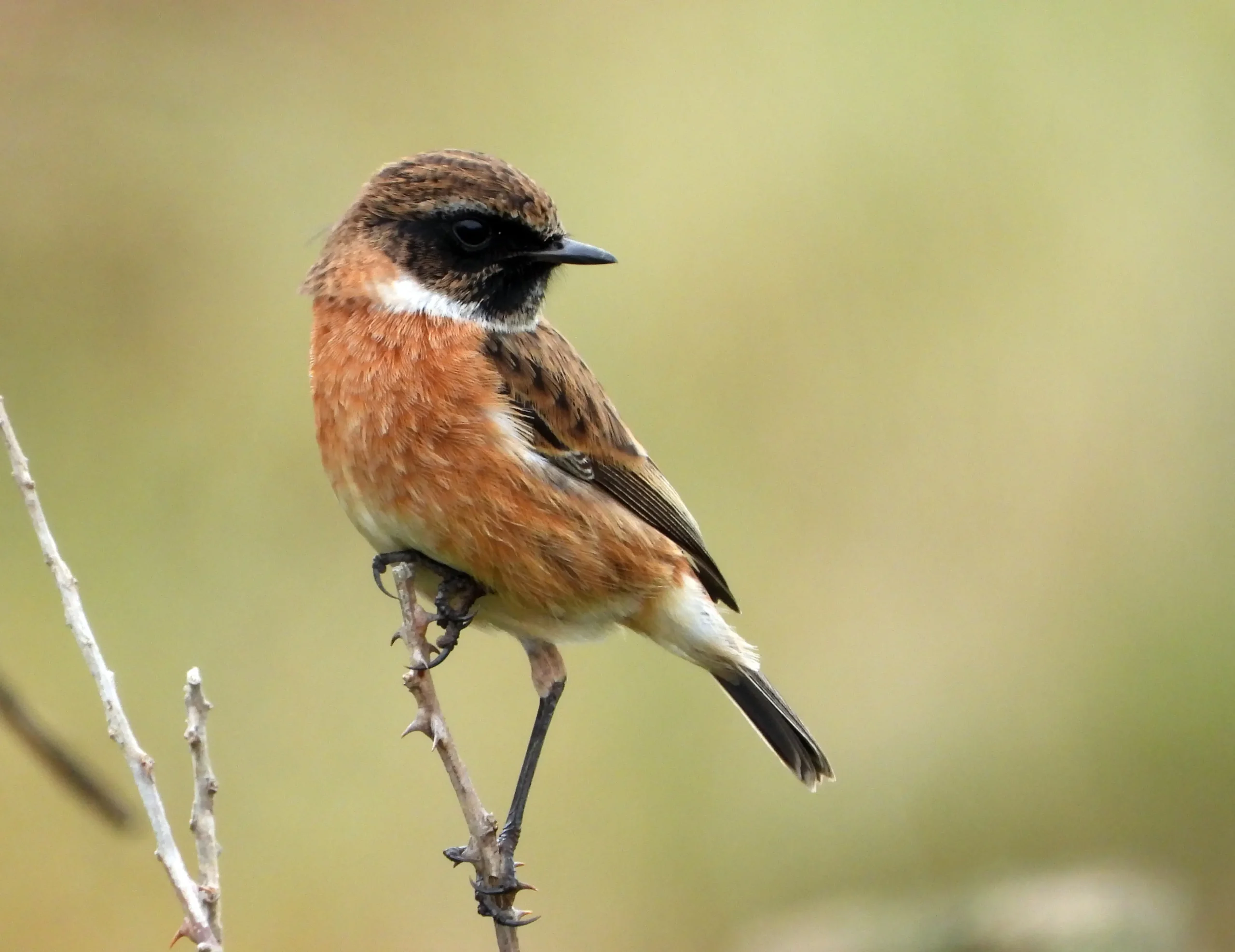
Stonechat on thorn scrub on Old Park
Reptiles and Amphibians
The physical structure of scrub and the surrounding habitat provide good conditions for reptiles. As reptiles regulate their body temperature by using the external environment, sheltered patches surrounded by scrub can provide sunny places in which reptiles can warm up, while at the same time giving cover from predatory birds and mammals.
Scrub habitat also provides reptiles with good hunting grounds for prey such as invertebrates, molluscs, and small mammals. Reptiles regularly found in the scrub in Old Park include slow worms, common lizards, and grass snakes (all of which are in serious decline elsewhere). Amphibians such as toads are also often found in sheltered spots among the scrub where they hunt invertebrates by night.
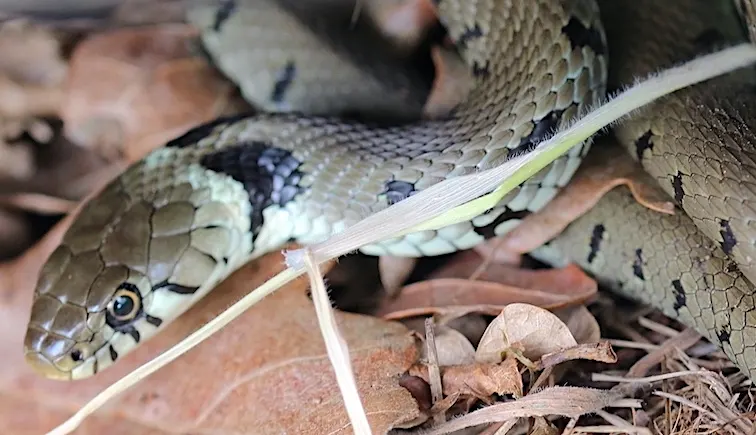
Grass snake on Old Park
Mammals
Many species of small mammal benefit from the presence of scrub as it provides both shelter and food. Temperatures within gorse thicket can remain above freezing during cold winter spells, providing a micro-climate in which wildlife (particularly small mammals which are especially vulnerable to the cold) can survive.
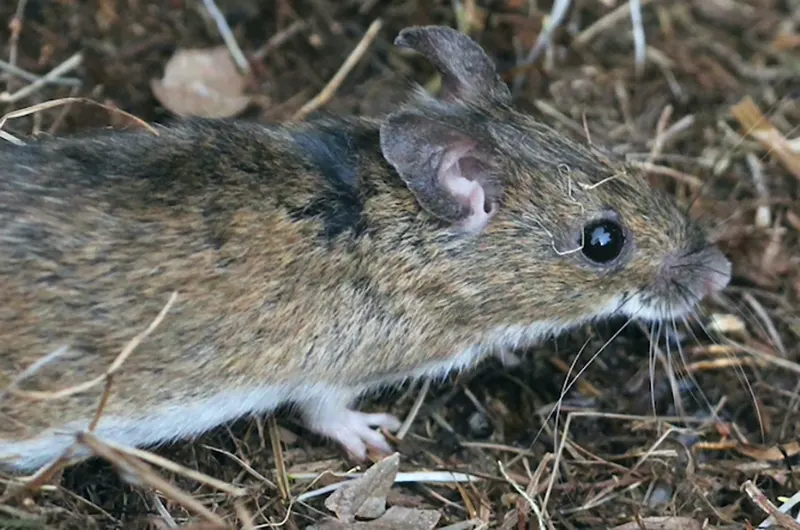
Wood mouse in scrub on Old Park
Invertebrates
Many types of invertebrate use gorse scrub, including bees, spiders, and moths. Grassy areas and bare ground in and around the scrub also provide shelter, food sources, overwintering habitat, and nesting sites for many species.

Ashy mining bee on scrub in Old Park
Priority Woodland Habitat
As is evident from the Habitats map, there is a considerable amount of deciduous woodland across Old Park and the golf course, falling into two broad categories: lowland mixed deciduous woodland, which appears stunted on parts of Old Park where the thin, low nutrient, acid soils exist, and the wet linear alder woodland which grows beside watercourses in the base-rich peaty soils of the valley bottoms. Both of these woodland types are priority habitats. They adjoin each other in many locations and support an important and declining assemblage of breeding woodland birds.
Lowland Mixed Deciduous Woodland
The lowland mixed deciduous woodland supports an open understorey of bramble, honeysuckle, hazel, and birch, with bluebells and wood anemones. Oak is the dominant species. It is the climax woodland on the coarse-textured sand and gravel soils and thrives on much of the steeply sloping terrain.
Several visiting ecologists have commented that much of this woodland provides an ideal breeding habitat for dormice (a European protected species) due to the understorey of shrubs and climbers which grows beneath the oak canopy in a largely undisturbed state. Dormice have been formally recorded in two different locations: at Realm Wood (Kent & Medway Biological Records Centre in 2014) and mid-way along the Fordwich Way in 2022 as part of an ecological survey commissioned by Sustrans ahead of planned improvements to the cycle route.
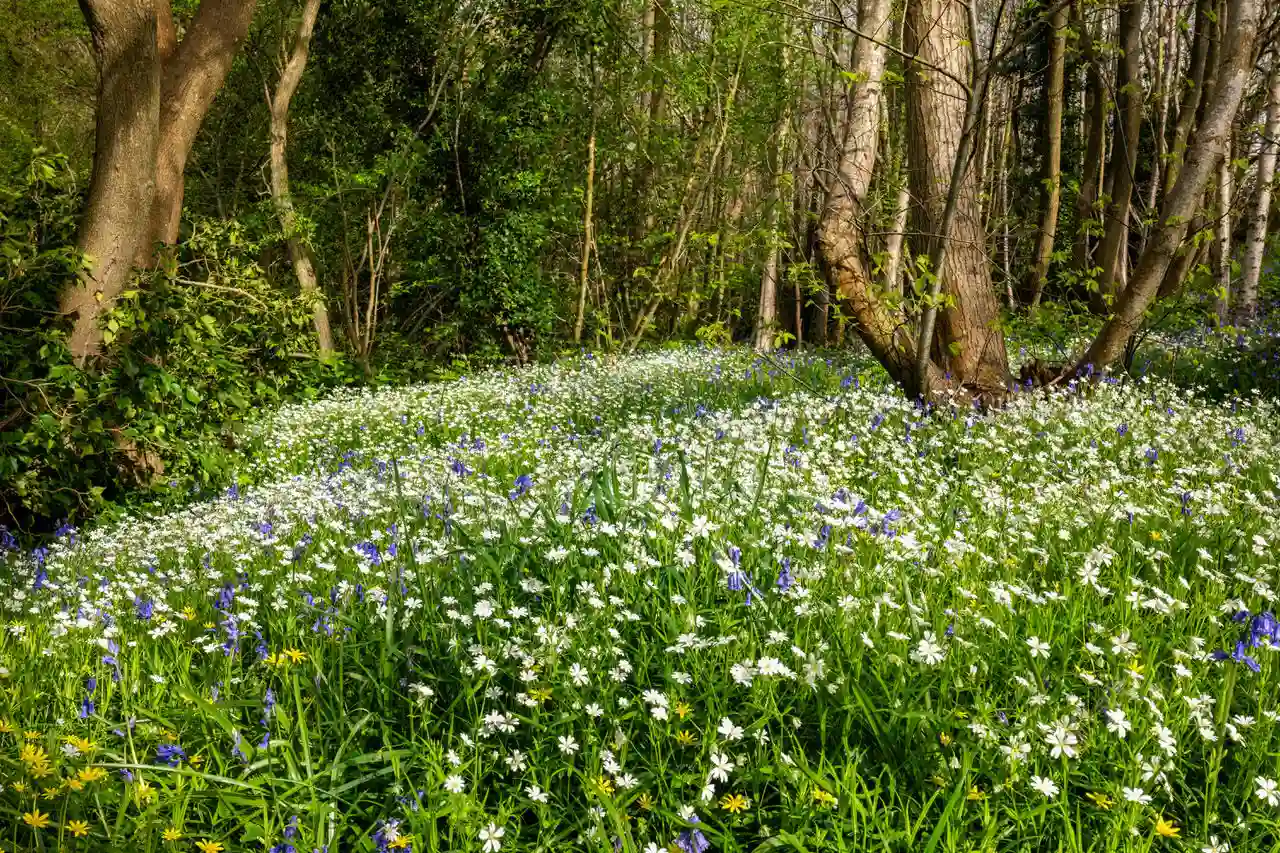
Greater stitchwort, bluebells and lesser celandine in Old Park’s woodland
Linear Wet Alder Woodland
The linear wet alder woodland and the plants associated with it is one of the key ecological features of Old Park which contributed to its designation as a Site of Special Scientific Interest (SSSI). Much of this woodland is classified as ‘ancient woodland’, meaning that it has been in existence since at least 1600 and has developed into a complex, irreplaceable ecosystem.
The wet woodland contains a rich ground flora such as large bitter-cress, lesser pond-sedge, and the two British species of golden saxifrage: opposite-leaved and alternate-leaved. The beautiful marsh marigold occurs at intervals along the stream course.
The main stretch of wet woodland runs from south to north through the golf course and then down through Chequers Wood to the Fordwich water meadows, with another smaller stretch of wet woodland running down from the acid grassland plateau to Reed Pond. The latter contains two veteran alder trees which are listed on the Woodland Trust’s Ancient Tree Inventory due to their huge girth. One measures 4.46m and the other a record 5.99m. Two other veteran alder trees are also listed close to Reed Pond.

Marsh Marigold (Axiophyte)
The area above Reed Pond is also home to a number of ‘slime moulds’. This term is an informal name given to fascinating organisms which are not a plant, an animal, or a fungus. They are amoeba-like organisms which are able to move in search of food. They typically occur in cool, moist, shady places within dead wood, beneath logs, or on moss or leaf litter on the woodland floor. They do not attack plants, but obtain their food by engulfing bacteria, fungal spores, and other tiny pieces of organic material as they ‘ooze’ their way through wet woodland. The fruiting bodies produce spores which germinate into single-celled structures to begin the life cycle again.
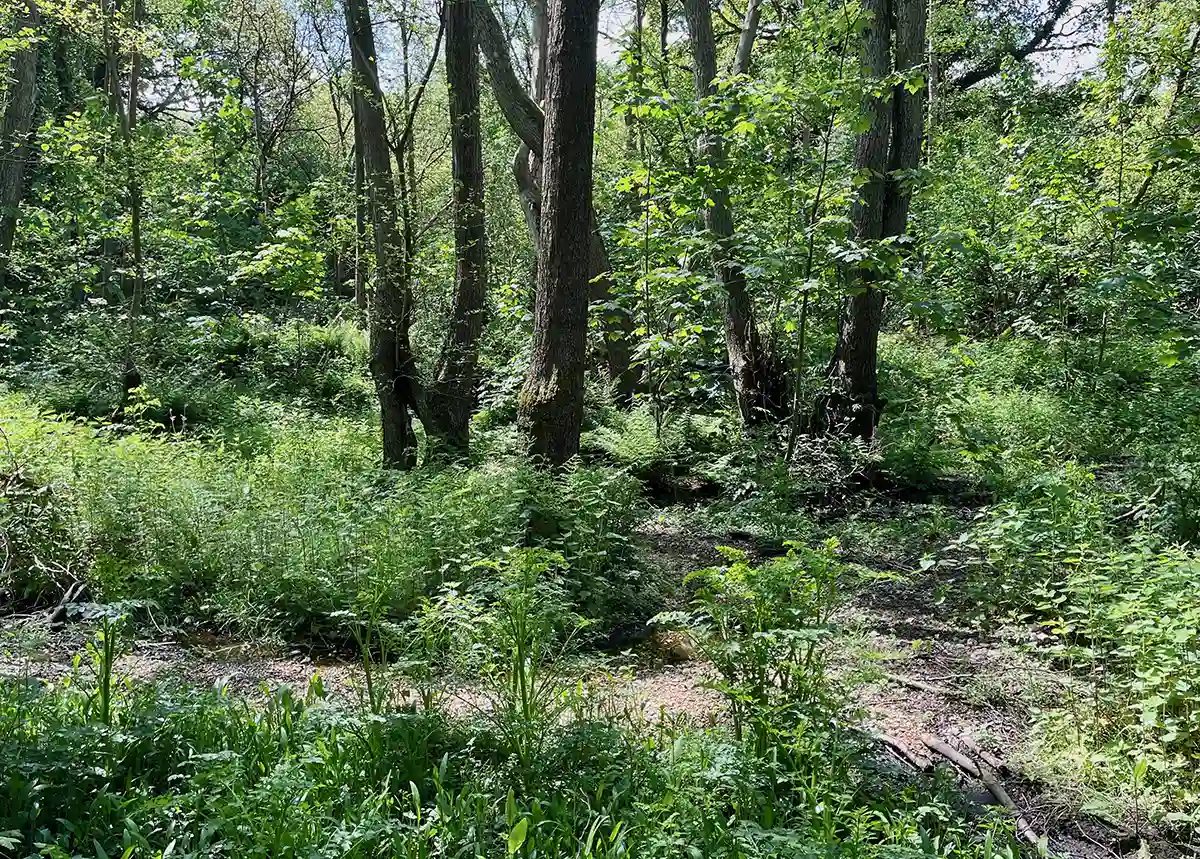
Wet woodland above Reed Pond
Wet woodland is included as a priority habitat in the Kent Biodiversity Strategy 2020 – 2045. A priority habitat is one that has been identified as being a threatened habitat and consequently in need of conservation action.
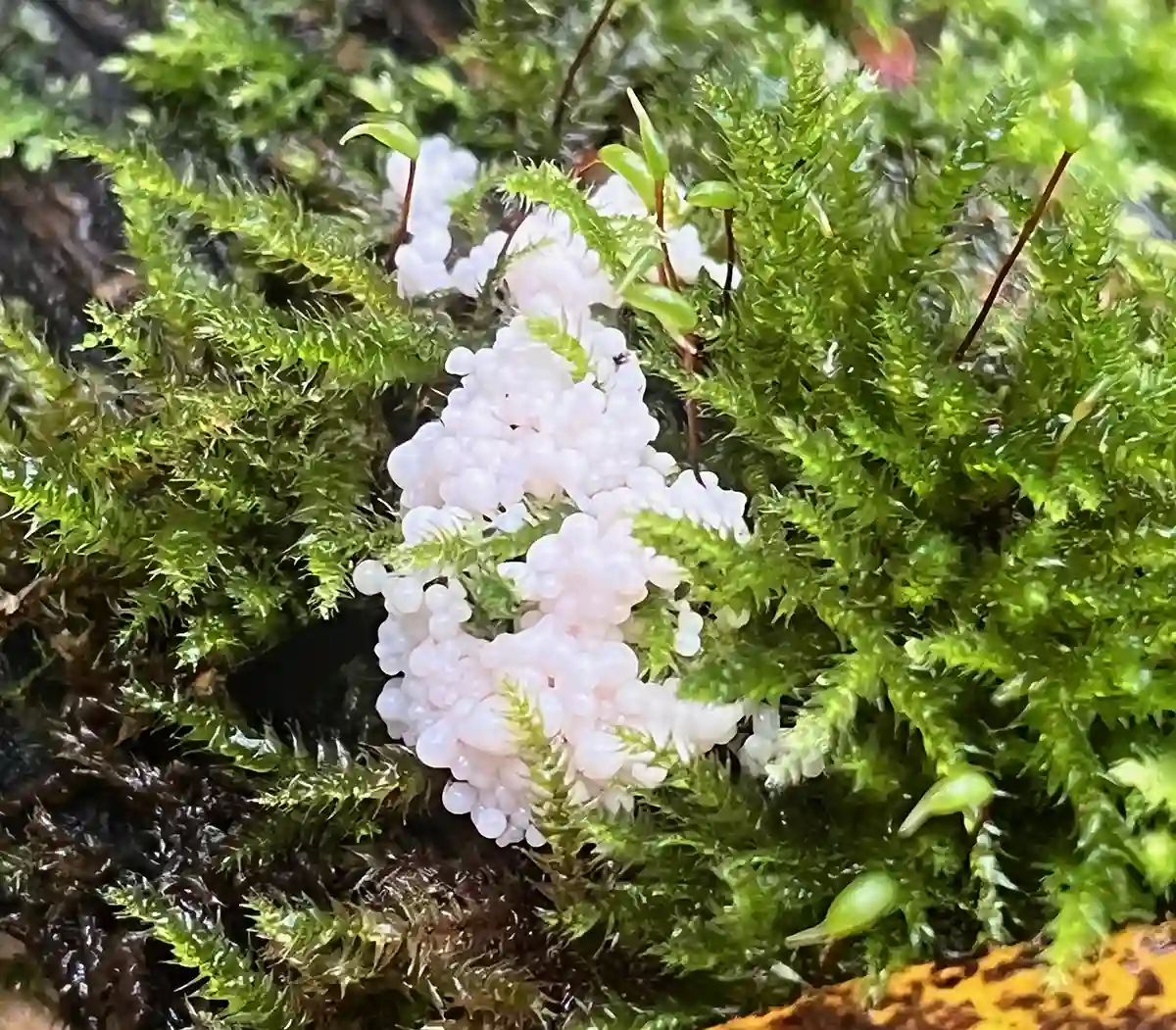
Slime mould in wet woodland above Reed Pond
Chequers Wood
On the eastern fringe of the Old Park SSSI lies the ancient woodland of Chequers Wood, which is a fusion of mixed deciduous woodland and linear wet alder woodland. Chequers Wood is approximately 9.6 hectares (14.6 acres) in size and is a mixture of oak woodland and chestnut coppice. A number of key ancient woodland indicator species remain, such as wood spurge and pignut. Bluebells and wood anemones abound in springtime.
One of the distinctive features of Chequers Wood is the amount of dead wood on the woodland floor, which supports a wide range of fungi that become apparent in the autumn. A block of sweet chestnut plantation adjacent to Chequers Wood also shows clear signs of a rich ancient woodland ground flora, including wood sorrel, wood anemone, and butcher’s broom, as well as some relic tree species, including hornbeam.
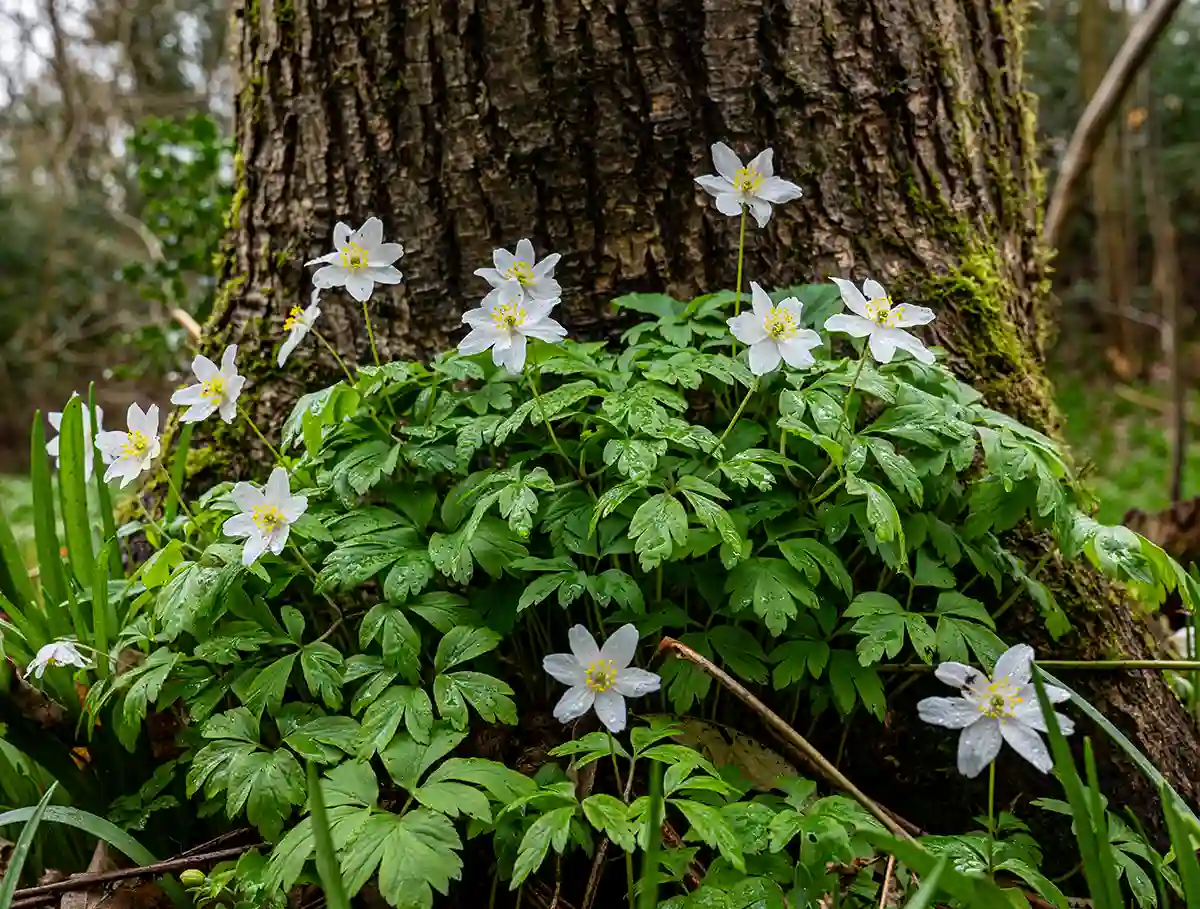
Wood anemone
Water Meadows
At the point where National Cycle Route 1 leaves Old Park’s wet woodland in the direction of Fordwich, it enters an area of flood meadows and ditches next to the Great Stour river. This area is classified as ‘lowland neutral grassland meadow’. A large part of the area floods when the river rises above its banks during periods of prolonged rainfall. This helps alleviate flooding downstream in Fordwich.
The area contains a diverse range of grasses, including meadow fescue and meadow foxtail. Much of it is still used for hay-making. Colour is provided by meadow buttercup, common sorrel, and patches of cuckoo flower. The ditches are dominated by bullrushes and reeds, and contain water plantain and purple loosestrife. The meadows and ditches support a rich insect community, while the rougher areas along the field edges provide excellent nesting sites for small mammals such as field voles and harvest mice.
The ideal management regime for water meadows is for a hay cut to be taken in early summer and for cattle to graze the aftermath or re-growth in late summer. This is an important priority habitat which is under threat from agricultural intensification.
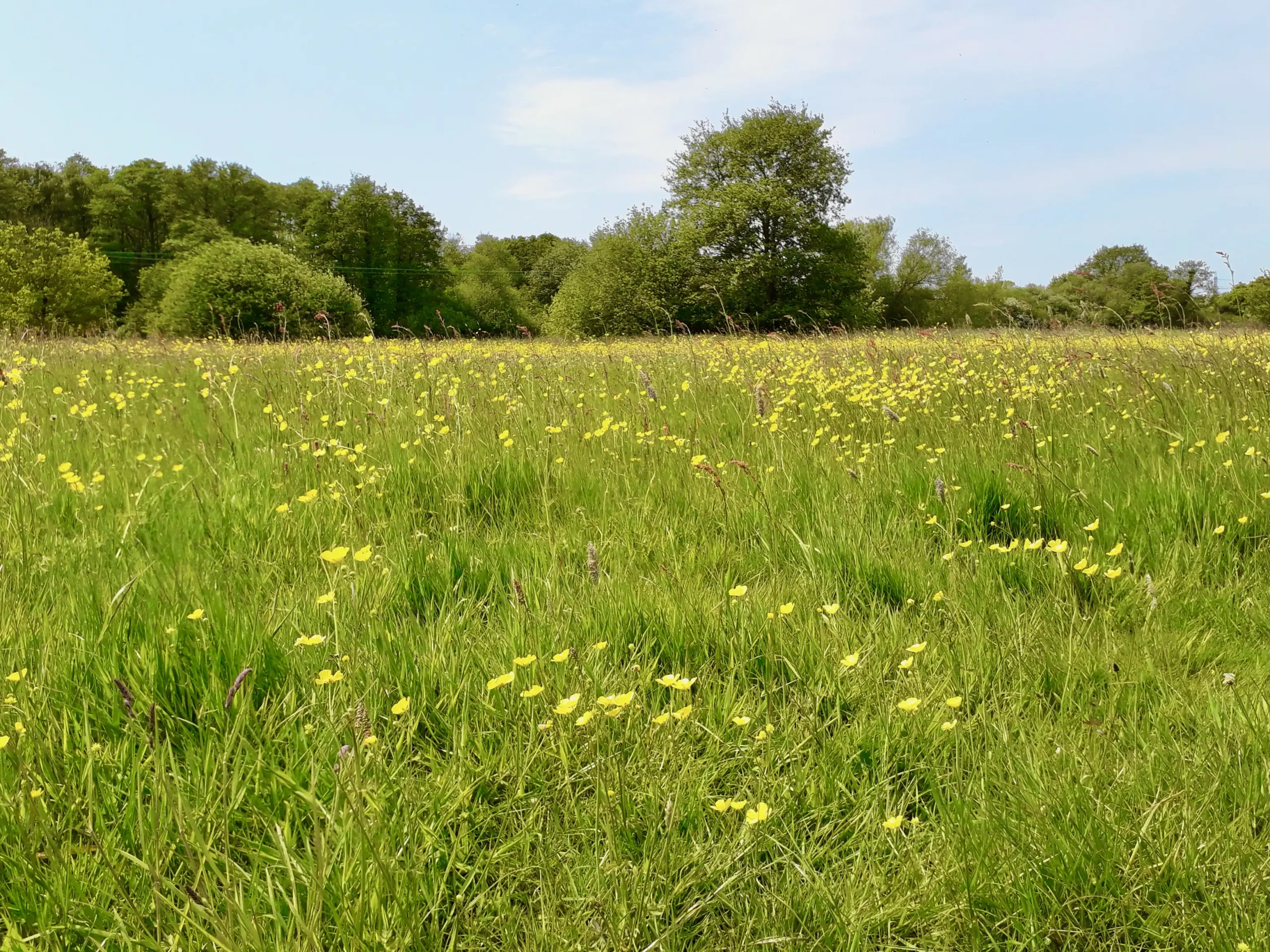
Meadow Buttercups on the water meadows
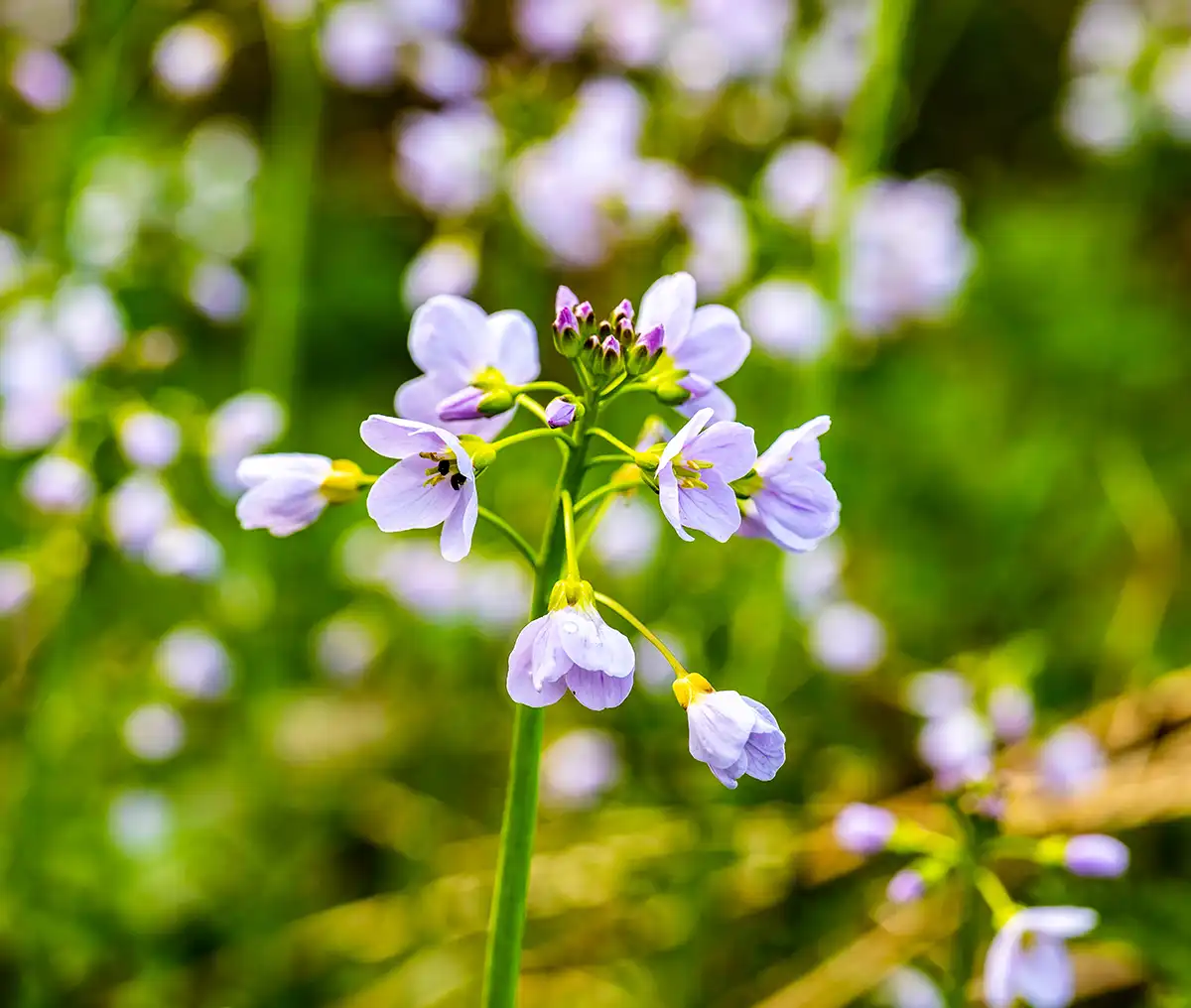
Cuckoo Flower on the water meadows
Ponds
At Old Park, ponds provide a critically important freshwater habitat for a wide range of wildlife. The ‘Reed Pond’ is the largest and oldest pond in the local area. Ponds support a diverse range of insect and plant life at the base of the food chain and provide a protected breeding refuge for amphibians (toads, frogs, and newts), a hunting ground for grass snakes, and a drinking and bathing resource for birds and mammals. The turtle dove is one species which needs access to fresh water in order to feed its young. Insect-eating birds and mammals (such as bats) benefit from ponds because they usually help to increase the insect population.
A pond can be classed as a ‘Priority Pond’ if it supports a protected species or a significant range of plants and animals. Reed Pond appears to meet the criteria, and it is hoped that an application will be submitted to have it registered as a Priority Pond early in 2025.
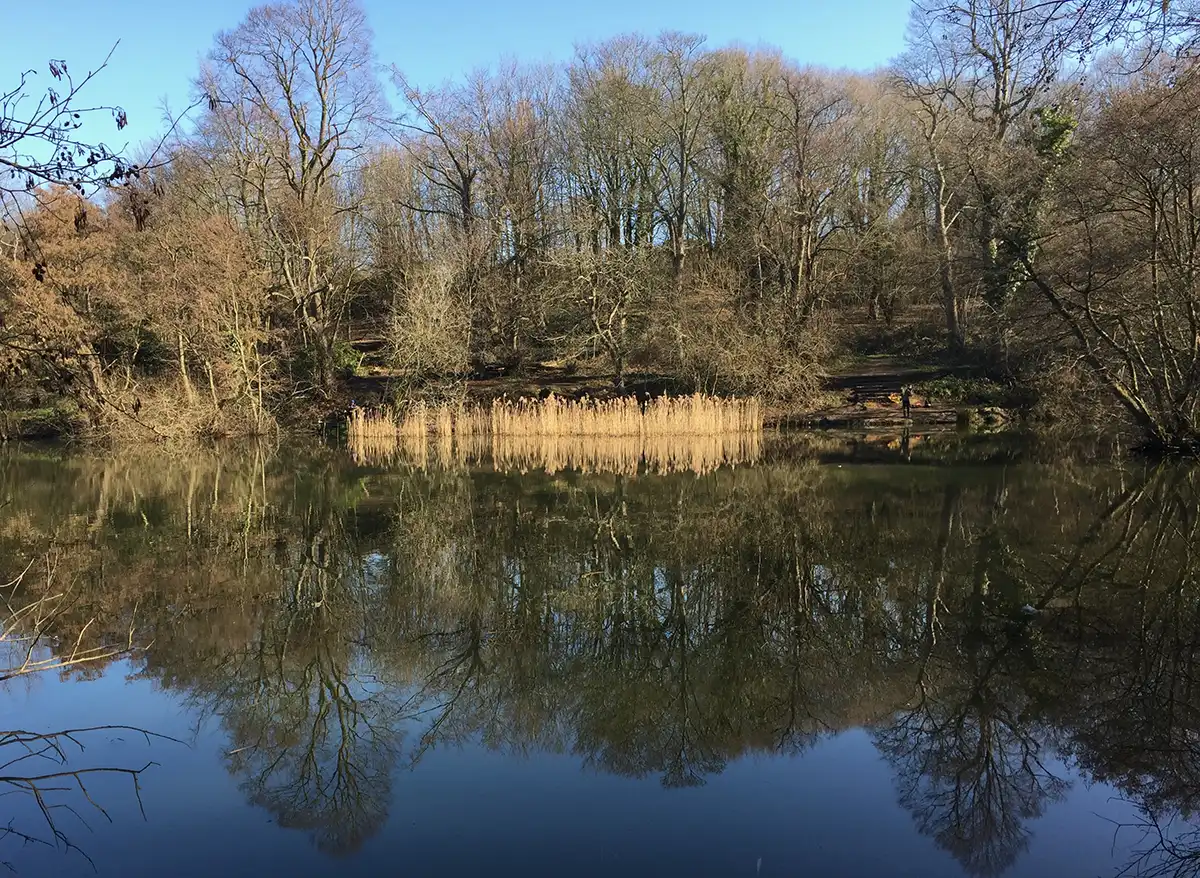
Reed Pond in Winter
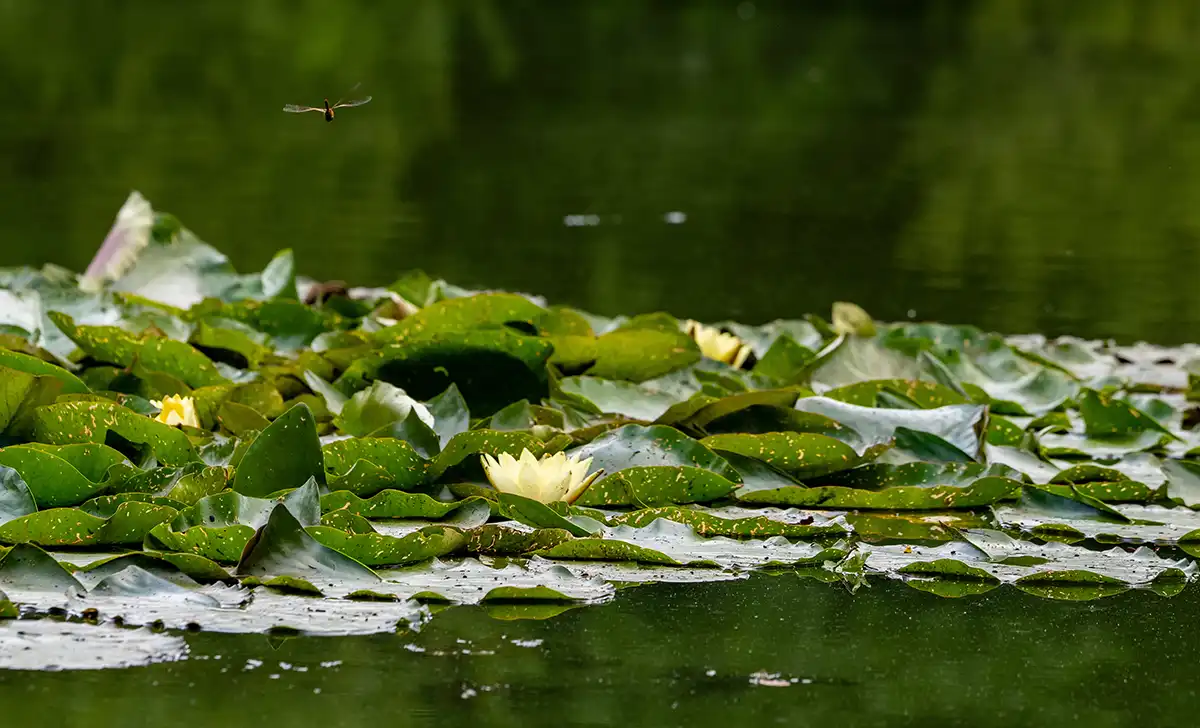
Water lilies at Reed Pond, with Norfolk Hawker dragonfly in flight
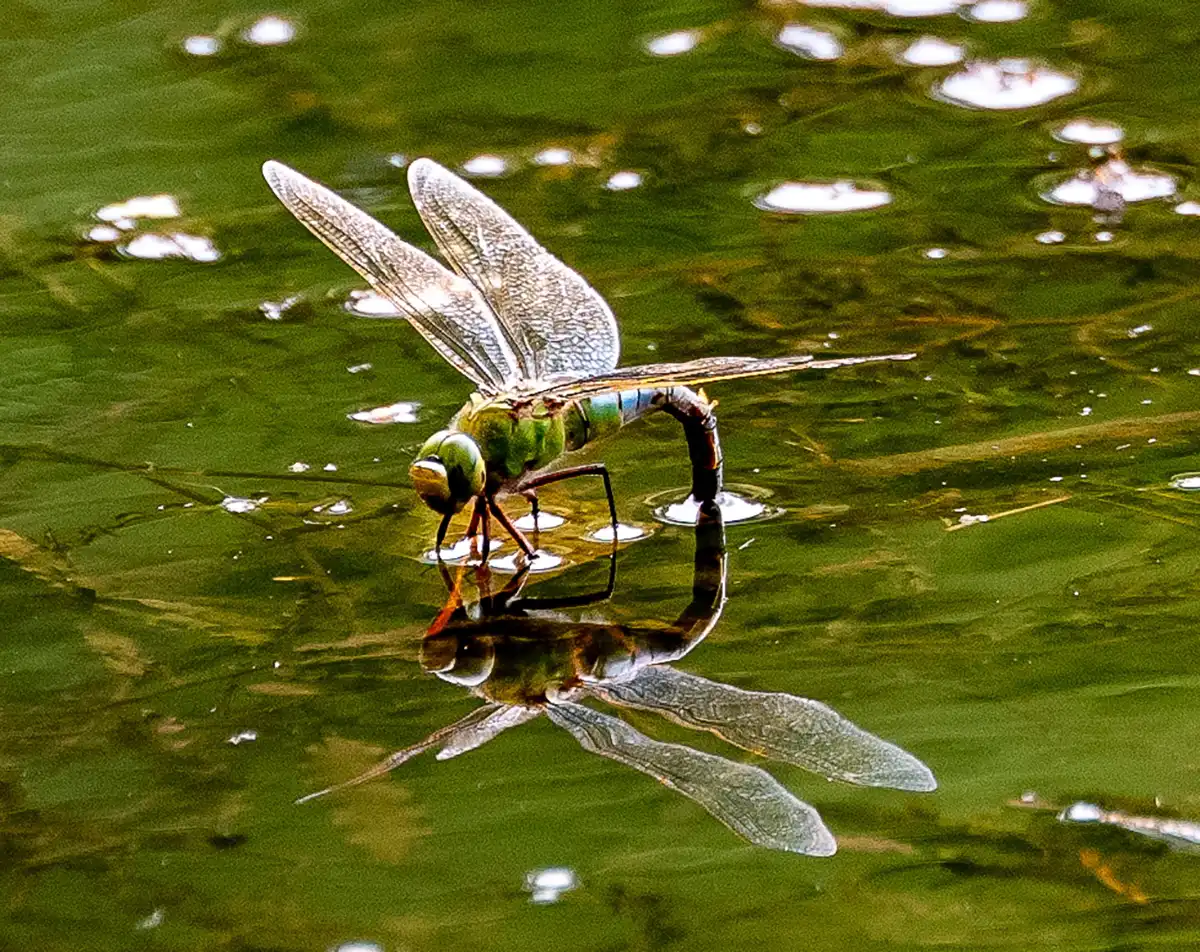
Emperor dragonfly laying eggs in Reed Pond